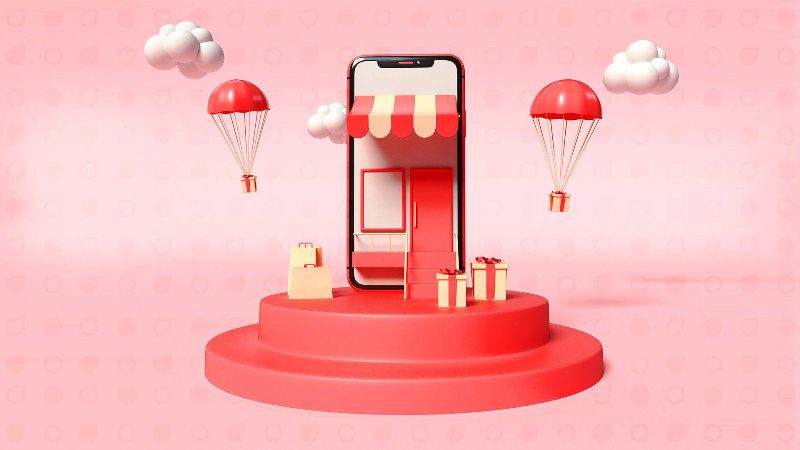In today’s digital age, the world of commerce has expanded beyond brick-and-mortar stores to the vast landscape of online shopping. Setting up an e-commerce store has become a crucial endeavour for businesses aiming to reach a global audience, enhance brand visibility, and boost sales. So let’s check out everything about the How to Set Up an Ecommerce Store article.
Interested in learning more about how to improve your website’s visibility and authority? Check out this blog post on “What are backlinks” to understand the power of backlinks in driving traffic and enhancing your online presence.
If you’re considering embarking on this exciting journey, this comprehensive How to Set Up an Ecommerce Store guide will walk you through the process, offering expert insights and step-by-step instructions on How to Set Up an Ecommerce Store that thrives.
(Guide) How to Set Up an Ecommerce Store
Congratulations on taking the first step toward establishing your online business! Setting up an e-commerce store involves several strategic steps that require careful planning, execution, and ongoing management. Follow this How to Set Up an Ecommerce Store guide to create a successful online store that captivates your target audience and drives sales.
Step 1: Market Research and Niche Selection
Before diving into the world of e-commerce, it’s essential to conduct thorough market research to identify your target audience’s preferences, needs, and pain points. This research will guide you in selecting a profitable niche that aligns with your passions and expertise while catering to market demand.
Step 2: Choose the Right E-commerce Platform
Selecting the right e-commerce platform is a critical decision that significantly impacts your e-commerce store’s functionality and (UX) user experience. Consider factors such as ease of use, customization options, payment gateways, and scalability when choosing a platform like Shopify, WooCommerce, or BigCommerce.
Want to know how you can start your e-commerce business in India? Check out this blog to know more.
Step 3: Domain Name and Hosting
Your domain name is your online store’s address, so make it memorable and reflective of your brand. Secure a domain name that’s easy to spell, relevant to your niche, and available for registration. Pair it with reliable hosting to ensure fast loading times and a seamless shopping experience.
Step 4: Design Your Store
The visual appeal of your e-commerce store plays an important role in attracting and retaining customers. Opt for a clean and user-friendly design that aligns with your brand identity. Customize your store’s layout, colour scheme, and typography to create a visually appealing and cohesive online presence.
Step 5: Product Selection and Sourcing
Carefully curate your product offerings based on your niche and target audience’s preferences. Whether you’re selling physical products, digital downloads, or services, prioritize quality and relevance. If sourcing products externally, establish partnerships with reliable suppliers.
Step 6: Compelling Product Descriptions and Imagery
Your product descriptions and images serve as virtual salespeople, conveying the value and benefits of your offerings. Craft compelling, SEO-friendly product descriptions that highlight features, benefits, and solutions to customer pain points. Use high-quality images to showcase your products from multiple angles.
Step 7: Set Up Payment Gateways
Offering secure and convenient payment options is crucial for building customer trust and completing sales. Integrate reputable payment gateways that accept various payment methods, ensuring a seamless checkout process for your customers.
Step 8: Implement a Strong SEO Strategy
Enhance your store’s visibility on search engines by implementing a robust SEO strategy. Conduct keyword research to identify relevant keywords for your products and niche. Optimize your product titles, descriptions, and meta tags to improve your store’s search engine rankings.
Step 9: Create Engaging Content
Incorporate a blog or resource section on your e-commerce site to share valuable content with your audience. Regularly publish informative articles, how-to guides, and industry insights to establish your brand as an authority in your niche.
You can take some inspiration from this blog on content marketing strategies for your business.
Step 10: Social Media Integration
Leverage the power of social media to expand your brand’s reach and engage with your brand’s audience. Integrate social media buttons on your store, create shareable content, and actively participate in relevant online communities to foster a loyal following.
Step 11: Implement Email Marketing
Build and nurture your customer base through email marketing campaigns. Encourage visitors to subscribe to your mailing list by offering exclusive discounts or valuable resources. Send personalized product recommendations, updates, and promotions to keep your audience engaged.
Step 12: Launch and Promotion
Before launching your store, thoroughly test its functionality, navigation, and checkout process. Once you’re satisfied with its performance, announce your grand opening through various marketing channels. Consider offering special launch discounts or bundles to attract initial customers.
Step 13: Monitor and Optimize
After your store is live, continuously monitor its performance using analytics tools. Keep track of key metrics such as website traffic, conversion rates, and customer behaviour. Use these insights to identify areas for improvement and implement necessary optimizations.
Frequently Asked Questions (FAQs):
Can I start an e-commerce store with limited technical knowledge?
Absolutely! Many e-commerce platforms offer user-friendly interfaces that require minimal technical expertise. Additionally, there are numerous online resources and tutorials to guide you through the process.
How much does it cost How to Set Up an Ecommerce Store?
The cost can vary based on your chosen platform, design elements, and additional features. Basic plans can start at around $29 per month, while more advanced setups may incur higher monthly costs.
Do I need to have my products in stock before starting my store?
Not necessarily. You can consider dropshipping, where you partner with suppliers who handle product storage and shipping. This way, you can focus on marketing and customer service.
What marketing strategies work best for e-commerce stores?
A combination of SEO, social media marketing, influencer collaborations, and email marketing tends to yield excellent results for e-commerce businesses. Tailor your approach based on your target audience and market niche.
How long does it take to see significant results from my e-commerce store?
E-commerce success doesn’t happen overnight. It takes time to build a customer base, improve search rankings, and establish a brand presence. With consistent effort, you can start seeing significant results within six months to a year.
Is mobile optimization important for my e-commerce store?
Absolutely. With a growing number of users shopping on mobile devices, optimizing your store for mobile responsiveness is crucial. Ensure that your website is easy to navigate and loads quickly on smartphones and tablets.
Conclusion
Setting up an e-commerce store is an exciting endeavour that requires careful planning, dedication, and a customer-centric approach. By following the steps outlined in this How to Set Up an Ecommerce Store guide, you can create a successful online store that not only generates revenue but also provides value to your target audience. Remember that continuous learning, adaptation, and customer engagement are key to thriving in the dynamic world of e-commerce.










